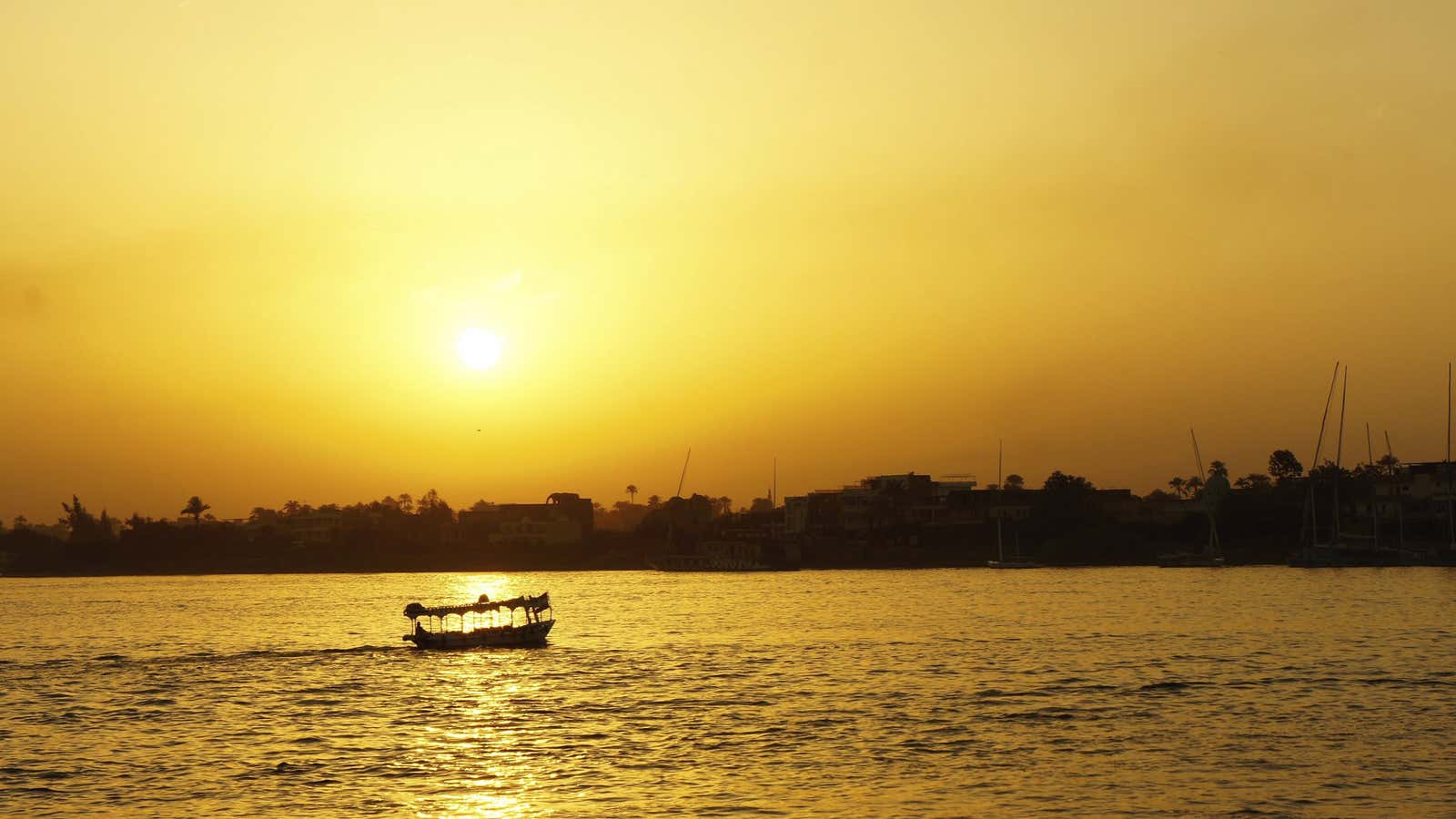The Nile River Delta, once known as the bread basket of the world, may soon be unable to support even the population of Egypt. According to a multi-year study published in the Geological Society of America this week, the area where the Nile river drains out to the sea is suffering from decreased water flow, rising sea levels, and salt water intrusion—all of which damage food production and fresh water supplies.
“With a population expected to double in the next 50 years, Egypt is projected to have critical countrywide fresh water and food shortages by 2025,” the researchers from the Mediterranean Basin Program and the University of Maryland wrote in a summary of the study.
Egyptians have for centuries depended on the nutrient-rich soil of the Nile River Delta. Now, the Nile barely meets Egypt’s water needs, providing just 660 cubic meters per person, one of the lowest per capita water shares in the world.
That is likely to get worse as salinity in the soil and water increases. According to the study, the Delta plains currently sit just 1 meter above sea level. The northern third of the Delta is falling by up to 8 millimeters a year while the sea level is rising about 3 millimeters. By 2100, as much as 24 miles of the Delta plains will be under water.
Experts have warned that parts of the Middle East and North Africa could become uninhabitable in a few decades if fresh water supplies continue to fall. Already, the amount of accessible fresh water in the region has fallen by two thirds over the last 40 years. Supplies are expected to fall by another half by 2050, according to the UN Food and Agriculture Organization.
Human activity has also eroded the land. The majority of Egypt’s 90 million people live near the Nile River Delta and the Lower Nile Valley, an area that accounts for 3.5% of the country’s total area. That makes the Nile River Delta one of the most densely populated parts of the country. The agriculture ministry estimated in 2015 that some 30,000 acres are lost each year to illegal construction.
The researchers say the situation may get worse. Ethiopia is building Africa’s largest hydro-electric dam, the Grand Ethiopian Renaissance Dam. Filling the dam’s reservoir, expected to hold 70 billion cubic meters, is expected to reduce the flow of the Nile even more.
